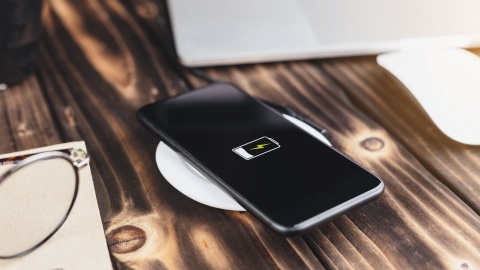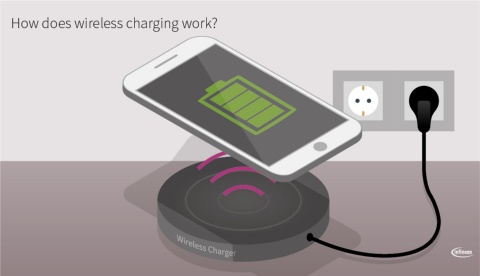
Place your smartphone on the station and it charges. That’s wireless charging – easy and convenient, since annoying plugging in is no longer necessary. But how does wireless charging actually work and where can you use it?
Watching movies, reading messages, communicating with friends on your smartphone – wireless data transmission now works almost everywhere in the world. But the wireless entertainment is usually over after a few hours when the battery is empty.
While older smartphones have to be connected to the charger with a cable, most newer smartphones charge wirelessly. All you have to do is place the device on a suitable charging station – as you do with electric toothbrushes. However, more power is needed to charge smartphones. Modern semiconductors, such as efficient microcontrollers and power modules, make this possible. But how does wireless charging actually work and what are the requirements?

How does wireless charging work?
Contrary to its description, wireless charging does not work completely without cables: charging stations are still connected with the socket via a power cable and remain connected constantly. But the smartphone charges wirelessly. It just has to be placed on the station. The charging station contains a coil through which alternating current flows. This electricity generates a magnetic field. When a smartphone is within this magnetic field, it is being charged. Basically, we have to distinguish between two types of charging: inductive and resonant charging.
What is inductive charging?
The receiver part of the smartphone also contains a coil, which utilizes the principle of induction. Induction means that a changing magnetic field in a neighboring piece of metal generates electric current.
Induction stoves are based on this principle: in this case, a coil in the cooktop generates a changing magnetic field through which electricity flows into the base of the pot. This causes the base of the pot to become hot.
In smartphones, the rapidly changing current is converted into an even current with corresponding circuitry. This current then charges the smartphone battery.
What is resonant charging?
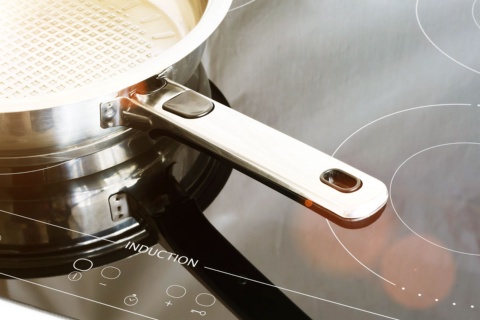
Resonant charging is an extended form of wireless charging. In this principle, there are one or more resonant circuits between the coil in the charging station and the coil in the device. These are electric circuits which consist of a capacitor and a coil which are adapted exactly to suit the respective application.
This has several advantages over inductive charging:
- Resonant charging can charge several devices at once
- Resonant charging allows the device to be placed inaccurately on the charging station
- Resonant charging allows greater distance between the charging station and the device
- Resonant charging provides higher levels of efficiency in which more of the energy reaches the battery
But with all these advantages, resonant charging is more complicated than inductive charging. For example, it needs more components, which makes it more expensive in practice.
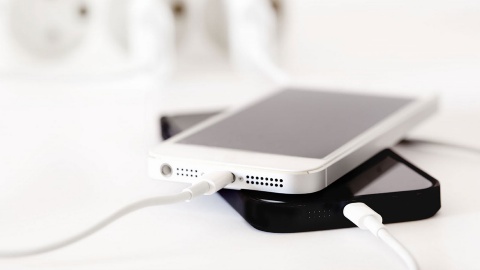
Applications for wireless charging
It's not only smartphones that can be charged wirelessly. The technology is being used increasingly also for other devices. These include:
- Smartwatches, Bluetooth headphones, and other wearables
- Notebooks and tablets
- Electric tools (cordless screwdrivers and similar)
- Service robots (e.g. vacuum cleaners and lawnmowers)
- Electronic toys and drones
Wireless charging has many advantages for these applications:
- It is simpler and more convenient
- If the charging station is always in the same place, you don’t have to look for charging cables
- Publicly accessible charging stations, such as those that fast food and coffee chains have installed in tables in some outlets, allow you to charge your smartphone while you are out and about
- The charging socket is no longer used as often and, as a result, suffers less wear and tear
- If smartphones can completely do without charging sockets, this reduces the risk of moisture and dirt getting inside the phone; charging sockets are often the cause of such damage
More applications for wireless charging
In the medical field, wireless charging has benefits with regard to hygiene; devices that do not need a socket for the charge cable are easier to disinfect. Cable lying around are also a tripping hazard – especially where many devices are used, such as in healthcare. In this area, wireless charging is a considerable improvement.
Last but not least, electric vehicles could also be charged wirelessly. But a lot more energy has to be transferred in this case.
Back to smartphones: what do you need for wireless charging? Quite simple: a Qi charger.
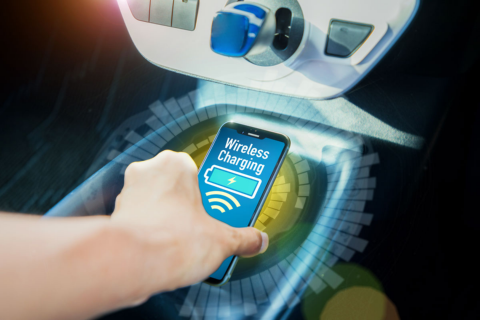
What is a Qi charger?
With wireless charging, users no longer have to have different chargers for different smartphones. This is why several standards were discussed at an early stage, one of them being the Qi standard for inductive charging.
Qi – an international standard
Qi is the Chinese word for the circulating life force. The industry standard was defined by the Wireless Power Consortium (WPC), to which companies such as Samsung and Apple belong. The Qi standard sets the technical conditions that charging stations and devices to be charged must fulfill. For example, any Qi charger will charge any Qi-enabled smartphone., while older smartphones can be upgraded with special smartphone shells or stickers.
The latest standard, Qi2, was recently announced by the WPC, and it will bring significant improvements: Thanks to this improved magnetic coupling, less power gets wasted leading to reduced thermal dissipation, increased efficiency and speed of charging. The experience improves in every way, becoming especially safer for both users and devices.
Qi charging stations in automobiles and furniture
Standardization opens up completely new possibilities, such as integration of inductive charging stations in vehicles and furniture. There are already charging stations that can be connected to the cigarette lighter in automobiles. But an increasing number of automobile manufacturers now integrate charging stations in the vehicles.
Ikea already sells lamps with integrated inductive charging stations and markets cell phone shells to upgrade smartphones that don’t have the Qi standard.
How do you use an inductive charging station?
You place the smartphone on the charging station, but you must make sure that you position the device quite precisely. The charging process works only if the coil in the smartphone is above the coil in the charger. If the two coils are too far apart, the charging process is interrupted.
To prevent this and stop the phone sliding around, the contact surface of most charging stations is made from an anti-slip material. Some charging stations even have magnets to hold the smartphone in the correct position.
Improvements in wireless charging
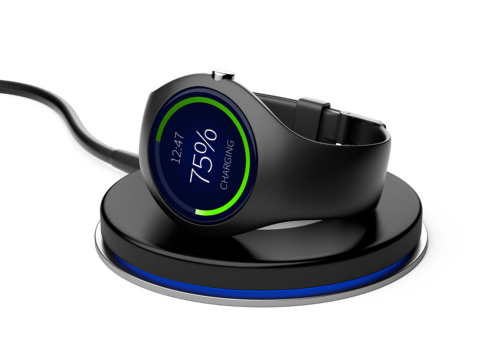
However, the correct position is usually not enough. Ideally, the smartphone should touch the charging station without a cover – but for the charging process, most stations can handle covers that are just a few millimeters thick.
Some charging stations use several coils. These provide more flexibility with regard to positioning the smartphone on the charger. Depending on the charging station, several devices, such as a smartphones and smartwatches can be charged at the same time. However, these charging stations are much more expensive that those with one coil and are currently used mainly in automobiles.
To date, wireless charging is in general slower than wired charging. Devices in Qi standard, on the contrary, support base power profile (BPP) in 5 Watt or extended power profile (EPP) in 15 Watt and magnetic power profile (MPP) in 15 Watt. Most companies, especially those leading the smartphone industry, have proprietary protocols that can support wireless charging power up to 50 Watt which is very close to wired charging power rates.
Depending on the station, smartphones may only be moved to a certain extent during charging. This limits the functions during charging. But charging stations on which cell phones are positioned at a certain angle are also available. This allows you to watch movies while the phone is charging.
If you want to check the charging status of the battery and remove the smartphone from the station to do this, the charging process is interrupted. Because of this, many charging stations show the charge status with LEDs – and users can see this easily without having to move or remove the device.
Is wireless charging dangerous?
The charging stations are shielded so that the range of the magnetic field is very limited or is aimed in a specific direction. Besides, with smartphones the magnetic field is weak and exists only when a device is being charged.
There is a risk with foreign metal objects: as with induction stoves, they can become extremely hot when they get into the magnetic field of the charging coil. But “smart” charging stations are already available. They detect when a foreign object is between the smartphone and the contact surface and stop the charging process.
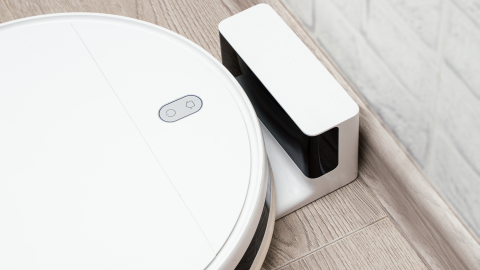
The future of wireless charging
The number of devices that can be charged wirelessly is increasing continuously, and with the increase in fast charging options, acceptance among users will also continue to grow. Beginning with smartphones, wireless charging will also be possible for many devices. Headphones, smartwatches, fitness trackers, vacuum robots, but also medical devices with low power consumption, such as pacemakers, will benefit from more convenience, improved safety and efficient charging experience.
Depending on the stage of development in the technology, higher charging power is entering more and more applications.
Last update: August 2023
